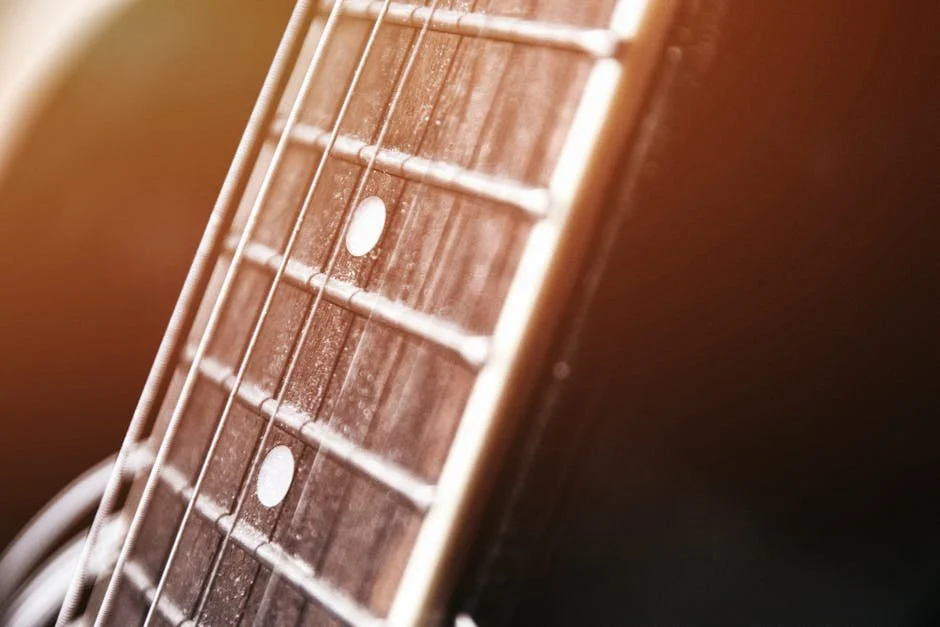Introduction to Guitar Chords
Guitar chords are the building blocks of music on the guitar. They are created by playing a combination of notes together to form a harmonic sound. Mastering guitar chords is essential for any guitarist looking to enhance their playing skills. Keep reading to learn the basics of guitar chords and how they can elevate your musical abilities.
Basic Chord Progressions
There are common chord progressions that many musicians use to create songs. One example is the I-IV-V progression, which is popular in various music genres. Another common one is the I-V-VI-IV progression that has been the foundation for numerous hit songs. By mastering these basic chord progressions, you can start crafting your own music and expanding your guitar skills.
Transitioning to Advanced Chord Techniques
You've mastered the basics and now it's time to take your guitar playing to the next level with advanced chord techniques. As you progress, you'll encounter chords that require more finger dexterity and precision. Here's what you need to know as you transition to advanced chord techniques:
Advanced chords involve intricate finger placements and more complex hand movements.
Building muscle memory is crucial for switching seamlessly between these advanced chords.
Practice transitioning slowly at first, focusing on accuracy over speed.
Use exercises and drills to improve your finger strength and flexibility.
Experiment with different voicings and variations of advanced chords to expand your sound palette.
Remember, patience and persistence are key to mastering advanced chord techniques. Keep practicing and you'll see progress!
Exploring Unique Chord Variations
Some guitarists enjoy experimenting with unique chord variations to create fresh sounds and add flair to their music. By exploring different chord shapes and voicings, you can discover exciting new ways to enhance your playing. Experimenting with open tunings can also lead to unique chord voicings that can inspire creativity. It's a fun way to break away from traditional chord progressions and inject your own style into your music.
Mastering Barre Chords
Barre chords, also known as bar chords, are essential for advancing your guitar skills. They involve using one finger to press down multiple strings at once across the fretboard. Mastering barre chords can be challenging at first, but with practice, you can improve your technique and play a wider variety of chords. Barre chords allow you to move chords up and down the neck, giving you more versatility in your playing. With dedication and persistence, you can conquer barre chords and enhance your guitar playing.
Understanding Scales and Chord Relationships
Scales and chords are closely related in music theory. Scales are a series of notes played in a specific order, while chords are groups of specific notes played together to create harmony. Understanding the relationship between scales and chords is essential for creating melodious music. When you know which scales work well with certain chords, you can enhance the sound and depth of your music compositions.
Incorporating Fingerpicking Techniques
Fingerpicking is a technique where you pluck the strings individually with your fingers instead of using a pick. It allows you to create a more intricate and melodious sound compared to strumming. Here are some tips for incorporating fingerpicking techniques into your guitar playing:
Practice fingerpicking exercises regularly to improve your dexterity and control.
Start with simple patterns before progressing to more complex ones.
Experiment with different fingers for plucking to find what works best for you.
Watch tutorials online or take lessons to learn new fingerpicking techniques.
Be patient and give yourself time to develop this skill, as it can greatly enhance your guitar playing.
Enhancing Rhythm with Chord Inversions
Chord inversions are a way to add variety to your music by changing the order of the notes in a chord. By using inversions, you can create smoother transitions between chords and make your music sound more interesting. Inversions can help enhance the rhythm of your playing and give your music a more dynamic feel.
Tips for Improving Chord Transitions
When improving chord transitions on the guitar, remember to practice regularly to build muscle memory, allowing you to switch chords smoothly. Use a metronome to practice at a steady pace and focus on accuracy over speed. Visualizing the finger placement for each chord before transitioning can also help. Experiment with different fingerings for the same chord to find what works best for you.
Conclusion and Practice Recommendations
In conclusion, practicing regularly is key to mastering advanced guitar chord techniques. Set aside dedicated time each day to practice and challenge yourself. You can enhance your skills by:
Experimenting with different chord progressions and rhythms.
Watching tutorials and learning from seasoned guitarists.
Joining online communities or attending guitar workshops for additional guidance.
Remember, consistency is key, so keep practicing and don't get discouraged by mistakes. With determination and effort, you'll surely improve your guitar playing abilities.


